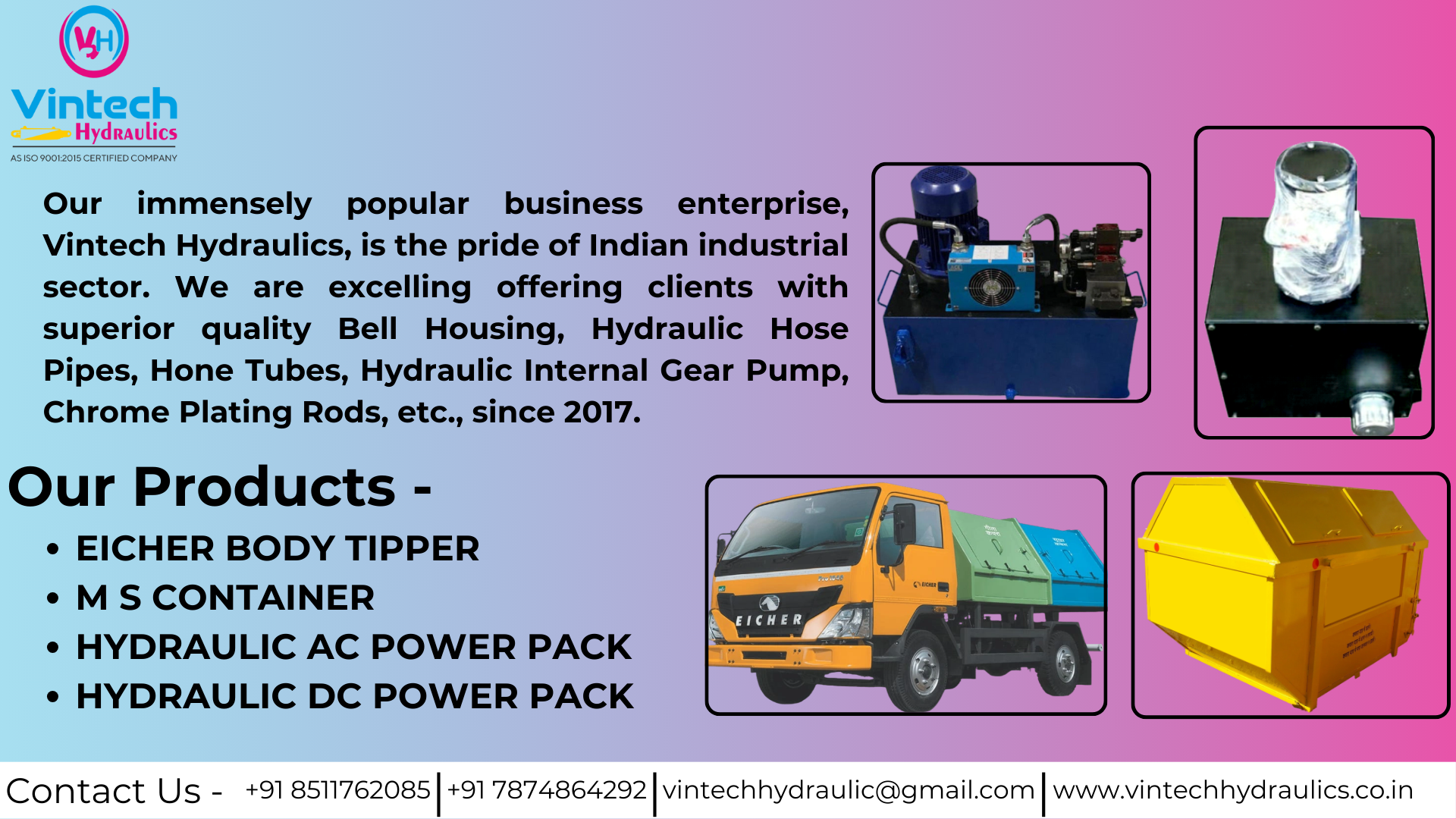
Hydraulic Pressure Relief Valve
Hydraulic Pressure Relief Valve
What is a Hydraulic Pressure Relief Valve?
A Hydraulic Pressure Relief Valve is a safety device used in hydraulic systems to limit the maximum pressure in the circuit. It protects hydraulic components (like cylinders, pumps, and hoses) from damage due to excess pressure by relieving the pressure when it exceeds a preset level.
It's an essential control valve in hydraulic power units, ensuring safe and stable operations under varying loads and working conditions.
How It’s Made – Construction & Design
Key Components:
| Component | Description |
|---|---|
| Valve Body | Usually made from steel, cast iron, or brass |
| Spring Mechanism | |
| Popper/Spool | Opens to divert fluid when pressure exceeds limit |
| Adjusting Screw | Allows users to set the relief pressure |
| Seal/O-Rings | Prevent fluid leakage around moving parts |
| Pilot Valve (optional) | Used in pilot-operated relief valves for better accuracy |
Manufacturing Process:
-
Body Casting or Machining:
-
CNC-machined or cast in steel or high-grade brass.
-
-
Component Machining:
-
Assembly:
-
Spring, spool, and seals are assembled inside the body.
-
-
Calibration:
-
The pressure setting is pre-adjusted based on client specs.
-
-
Testing:
-
Every valve undergoes leak and pressure testing for quality assurance.
-
Uses of Hydraulic Pressure Relief Valve
| Industry | Application Example |
|---|---|
| Manufacturing | Injection molding, hydraulic presses |
| Agriculture Machinery | Tractors, harvesters, loaders |
| Construction Equipment | |
| Industrial Automation | Clamping devices, hydraulic circuits |
| Material Handling | Hydraulic tail lifts, forklifts |
| Lifting & Hoisting | Scissor lifts, aerial work platforms |
| Brick/Paver Machinery | Hydraulic tile presses and block machines |
Importance
-
Prevents Equipment Damage: Avoids pressure overload that could burst hoses or crack components.
-
Ensures Operator Safety: Protects human lives in case of pressure spikes.
System Stability: Maintains smooth operation even under variable loading.
-
Increases Component Lifespan: Reduces stress and wear on pumps and actuators.
Advantages
| Advantage | Benefit |
|---|---|
| Safety Assurance | Prevents catastrophic system failures |
| Adjustable Pressure | Custom set pressure according to circuit requirements |
| Compact Design | |
| Reusable & Serviceable | Can be recalibrated or maintained |
| Quick Response | Instant pressure release during sudden spikes |
| Compatibility | Works with mobile and stationary hydraulic systems |
Significance in Hydraulic Systems
-
Critical Safety Component: Often the first line of defense against overpressure.
-
Essential in Load Variations: Keeps system pressure regulated during fluctuating loads.
-
Key to Energy Efficiency: Prevents energy loss due to pressure overflow.
Mandatory in Certifications: Required by many industrial safety codes (ISO, OSHA, CE).
Qualities of a Good Pressure Relief Valve
-
Precision Settable Pressure Range: Typically from 20 to 700 bar
-
Leak-Proof Sealing: O-rings made of Viton, Nitrile, or PTFE
-
Corrosion Resistant Body: Stainless steel or treated iron
-
Fast Actuation Time: Millisecond response under pressure spikes
-
Low Hysteresis: Ensures consistent performance
-
Serviceable Design: Allows internal part replacement
Where It’s Used
| Sector | Use Case |
|---|---|
| Industrial Plants | Used in power packs, automation lines |
| Road Equipment | Hydraulic breakers, asphalt pavers |
| Transport Units | Liftgates, compactors, hydraulic trailers |
| Farming Equipment | Seeders, sprayers, balers |
| Construction | Earth movers, loaders, jacks |
| Block Machine |
Frequently Asked Questions (FAQs)
Q1: What pressure range can a relief valve handle?
A: Standard valves handle from 20 bar to over 700 bar. Custom valves can go higher.
Q2: Can it be adjusted in the field?
A: Yes. Most valves come with an adjustment screw or knob.
Q3: What happens if a pressure relief valve fails?
A: System overpressure can cause component failure, fluid leaks, and safety risks.
Q4: How often should it be maintained?
A: Inspect every 6 months; full service every 12 months in critical systems.
Q5: Is it the same as a pressure reducing valve?
A: No. A relief valve protects the system from high pressure. A reducing valve maintains lower pressure in a part of the system.
Conclusion
A Hydraulic Pressure Relief Valve is a vital safety and control component in any hydraulic system. It ensures that your system operates within safe pressure limits, protecting equipment and personnel alike.
Its simple yet effective design, field adjustability, and versatility make it indispensable for modern industrial, agricultural, construction, and automotive machinery. Whether you're running a hydraulic press or a power pack system, a well-calibrated relief valve is key to maintaining reliability, safety, and performance.





